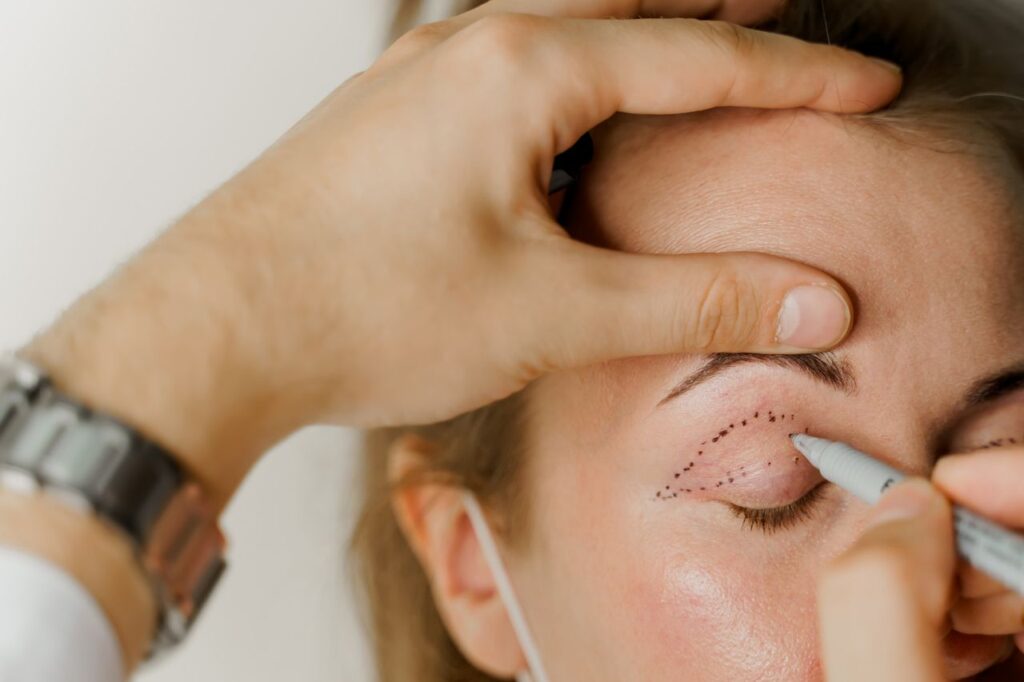How Painful Is Blepharoplasty?

Table of contents
1.
2.
5.
6.
7.
8.
9.
10.
11.
12.
Blepharoplasty, or eyelid surgery, is one of the most requested facial rejuvenation procedures. It can deliver transformative results if you’re bothered by drooping upper lids, persistent under-eye bags, or simply want a more refreshed appearance. But before making the decision, it’s natural to wonder: how painful is blepharoplasty?
While any surgical procedure involves some discomfort, most patients are pleasantly surprised by how manageable the recovery after blepharoplasty is. The procedure itself is performed with local anesthesia (sometimes with sedation), so you won’t feel pain during the surgery. Afterward, most people describe the sensation as mild soreness or tightness rather than significant pain. Swelling and bruising are more noticeable than discomfort, and most individuals require no more than over-the-counter pain relief during recovery.
Blepharoplasty is a surgical procedure that removes excess fat, skin, and muscle from the eyelids. It can be performed on the upper eyelids, lower eyelids, or both. The goal is to restore a more youthful, rested, and alert appearance. For some, it can also improve vision by lifting sagging skin that obstructs the field of sight.
Your comfort is a top priority. Blepharoplasty is performed under local anesthesia to help you relax. This ensures that you remain pain-free throughout the surgery. Dr. Ann Jayaram, MD, will check your comfort level before, during, and after the procedure.
For additional tips, you can review the blepharoplasty recovery process.
Lower blepharoplasty focuses on the area beneath the eyes, removing or repositioning fat to reduce puffiness and under-eye bags.
Candidates for blepharoplasty are typically healthy adults who are bothered by sagging upper eyelids, puffy lower eyelids, or both. Non-smokers and those without medical conditions that could impede healing are ideal.
A qualified surgeon like Dr. Ann Jayaram will assess your unique anatomy and goals to determine if blepharoplasty is appropriate. Good candidates have realistic expectations and understand the recovery process.
Most eyelid surgeries takes only 30 minutes, depending on whether you’re having upper, lower, or both lids treated.
Results often last 10–15 years, depending on skin quality, lifestyle, and genetics.
To view patient results, visit the blepharoplasty before-and-after gallery.
Blepharoplasty pricing varies depending on the extent of surgery and technique. As fee structures differ, we recommend discussing individualized pricing during your consultation. For more information, visit the blepharoplasty page.
Eyelid surgery is often combined with complementary treatments such as Botox or dermal fillers to enhance overall facial rejuvenation.
Hooded eyelid surgery refers to upper blepharoplasty, which removes excess skin that causes a “hooded” look over the eyes.
Yes, results from blepharoplasty are long-lasting, with most patients enjoying their refreshed appearance for 10-15 years.
Dr. Ann Jayaram is a cosmetic eye surgeon specializing in blepharoplasty and eyelid rejuvenation in the Bay Area. Her focus is on patient comfort, safety, and satisfaction. Patients praise her caring demeanor and meticulous technique, making EllevateMD a trusted destination for eyelid rejuvenation.
For more information about eyelid surgery, recovery, and patient stories, visit ellevatemd.com.